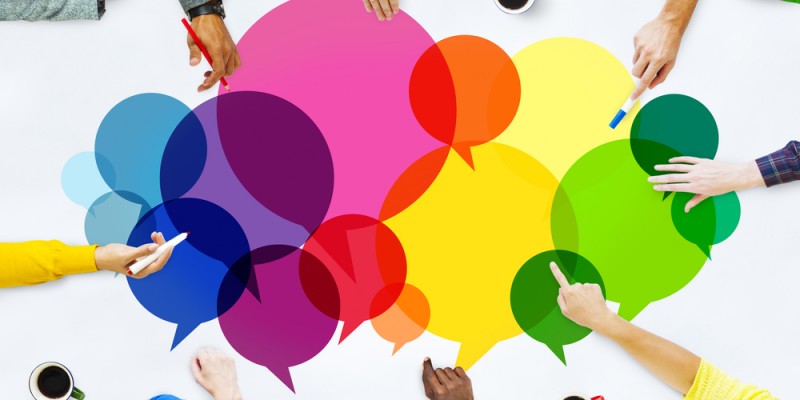In an increasingly connected world, companies are forced to act more and more “outside the box”, abandoning known models in order to stand out in the market. Business innovation is an important process in the business world, but many times, it comes at a price.
For this reason, more and more companies are betting on alternatives to put their ideas into practice. Crowdsourcing is one of those strategies.
The name comes from the union of two words in English: multitude (crowd) and source (source). The sense is that many people come together to create new products, test websites, produce content and find solutions.
The concept can be adapted to many areas, showing great advantages for companies that want to have a comprehensive view of their customers’ needs. Because through crowdsourcing you can better understand your audience and what aspects of your business need improvement.
A clear example of this is what Starbucks did in 2014, asking customers to design a new cup and for others to vote for their favorites. That is precisely what happened with the white cup contest.

What are the benefits of crowdsourcing
Crowdsourcing primarily offers significant benefits to companies hoping to complete complex tasks on a tight budget. Also, asking for advice and opinion from the crowd raises a certain customer engagement and improves brand reputation.
In this sense, crowdsourcing:
- Keeps customers engaged: Crowdsourcing shows your audience that you value their opinion, which leads to stronger brand connections. Additionally, customers are more likely to feel engaged with campaign concepts, service ideas, and products that they helped create.
- Promotes innovation and diversity: Accessing the thoughts of a wide diverse group of people and this allows for more out-of-the-box thinking. Crowdsourcing concepts access the wisdom of groups to help companies innovate.
Main advantages of crowdsourcing
- The possibility of using new knowledge about the decision-making processes and the definition of company strategies;
- Reduce time to problem resolution;
- More commitment from customers and business partners;
- It makes it easy to find professionals and business partners who can help in medium and long-term projects;
- Possibility of creating a constant flow of innovation and optimization of routines.
Crowdsourcing can have a great impact on the relationship with the consumer. External feedback makes detection problems and project defects related to new products make the process much more accurate. In this way, testing new solutions becomes more efficient and the portfolio of products and services can generate more profits.
In the long term, having the collaboration of consumers and commercial partners in a supervised way in the definition of market policies, sales strategies and projects in development will make companies more competitive. Greater participation in the brand by customers will translate into faster and cheaper expansion. The levels of innovation will also grow continuously.

Indicators that can inspire companies to manage through crowdsourcing
In 2018, eYeka, an online community and crowdsourcing platform, published a report examining the growth of this trend since 2012. The report looked at the crowdsourcing activities of the top 10 FMCG companies across four platforms. crowdsourcing leaders for 2018, as well as the crowdsourcing activities of the top 100 global brands.
As published in Forbes, eYeka took advantage of more than 90,000 participants to investigate how users share content, and among the most relevant conclusions of the study found:
85% of the best global brands of 2018 have used crowdsourcing in the last ten years.The best global brands are three times more likely to use crowdsourcing platforms than their own websites or social networks for their crowdsourcing efforts.
The consumer goods giants increased their investment by 48% in 2014, compared to 2013.
Of these ten companies, the top three crowdsourcing users in 2018 were Procter & Gamble, Unilever and Nestlé.
The content preferred by the best global brands in crowdsourcing is video content (45%).
Success stories
And continuing with this context, I want to let you know examples of global brands that have successfully implemented crowdsourcing strategies to promote their products.
1. McDonald’s hamburger line
McDonald’s carried out an activity through which it asked its fans in the United Kingdom to create a new line of products for the company. Thousands of proposals were taken into account thanks to a virtual hamburger builder, in which people could build hamburgers as they pleased.
Users were responsible not only for choosing the six ingredients that made up the burger, but also for choosing the name of the new burgers. Of course, this brought much more popularity to the brand.
2. My idea for Starbucks
In order to encourage the creativity of its consumers, Starbucks launched a campaign called ‘My Starbucks Idea’ where fans of this coffee could directly propose to the company the ideas they had to improve the brand.
The good news was that you don’t just work on opinions. The ideas were reviewed by executives of this company and many of them even became brand products, such as the application for Android phones and a points system called ‘My Starbucks Rewards’, which offers rewards such as free drinks. loyal customers of the company.
3. Canon’s Project Imagination
Starting with the Project Imagination contest, Canon asked its users to interpret 10 elements of a story, such as the location, the goals of the characters or even their mood, through photography.
Of the thousands of proposals that arrived, 91 photographs were chosen as the winners -and from that bank of images- five invited actors and directors (such as Jamie Foxx and Eva Longoria) chose 10 winning photographs, one for each element of the story, to make a short film
Subsequently, another five short films were made, only this time these cinematographic pieces were not carried out by recognized actors and directors, but by the same users who participated in the project.
4. LEGO ideas
LEGO has always developed models and blocks for thousands of children around the world to create their own stories and build castles, spaceships, pirate ships, cars, among other objects and situations.
Based on this premise, the company wants to launch products on the market that respond to the creativity of its customers, which is why it has created the LEGO Ideas platform, in which everyone can propose new products for this brand. Each of the proposals must be evaluated by the LEGO community and those who support it, contribute votes so that they are carried out.
Once an idea reaches 10,000 votes, it is reviewed by the company, and if it is accepted, it enters the LEGO production line, giving recognition to its creator and even part of the profits from its sales.
5. Marc by Marc Jacobs
The latest campaign by designer Marc Jacobs used social networks as the main input. The models that appeared in her campaign for fall 2017 were selected on Instagram and Twitter.
The call had more than 50 thousand participants, of which 30 people from various countries were chosen to go to New York and become the new face of the brand.
Other known cases are: Wikipedia, a collaborative encyclopedia that is nourished by the contribution of volunteers from all over the world.
The best example of crowdsourcing as an innovation tool is NASA itself, which invested $20 million USD in crowdsourcing contracts over five years.
The world’s largest companies are also adopting crowdsourcing for innovation. Apple, Google, Amazon, Zimbra, Meebo, Skype, Salesforce.com, Eli Lilly, P&G (Procter & Gamble), BASF, DuPont, Dow Chemical, General Mills, Kimberly-Clark, and GSK (Glaxo Smith Kline) are just a few examples.

DO YOU WANT TO LEAVE A COMMENT ?
